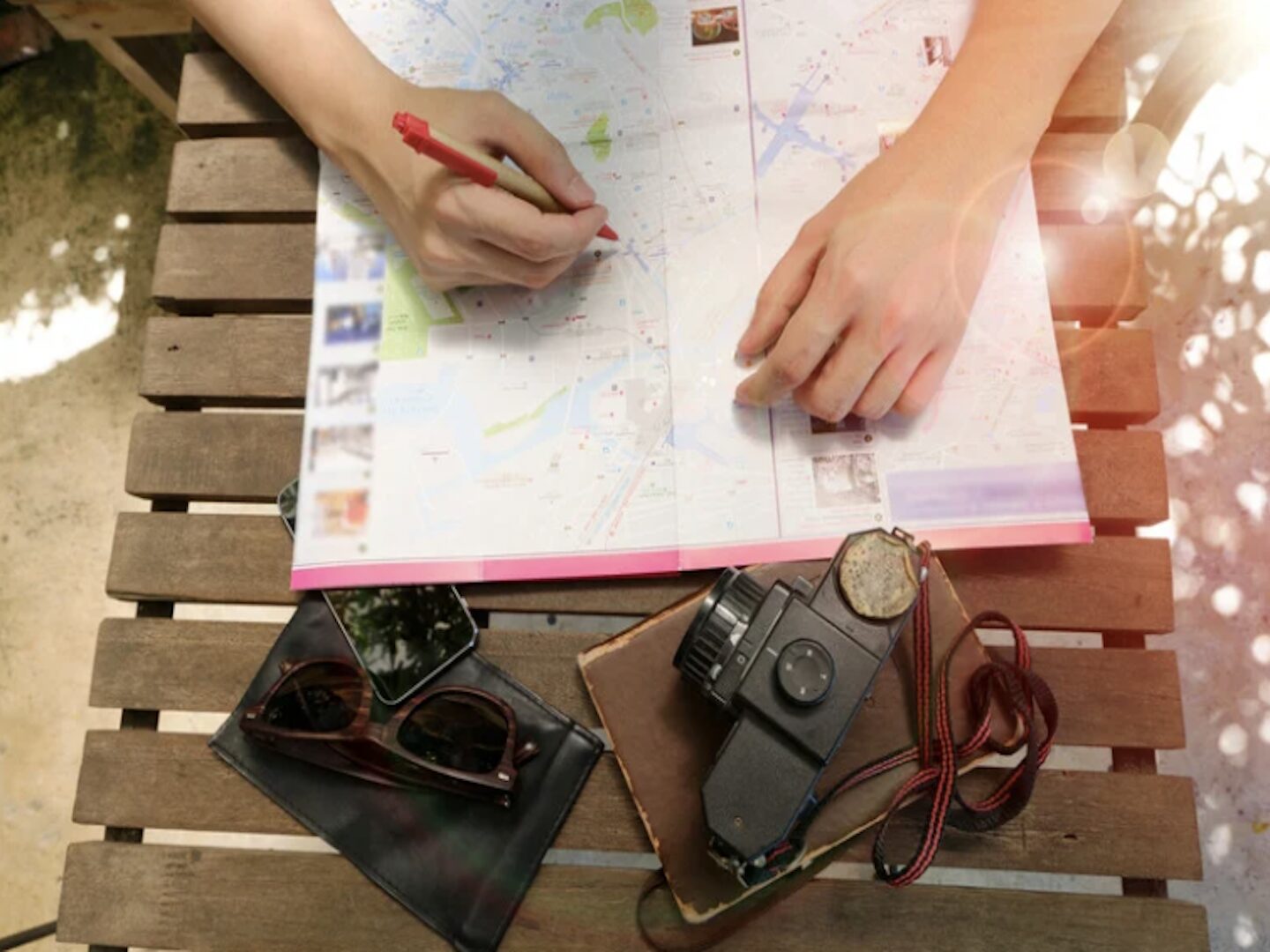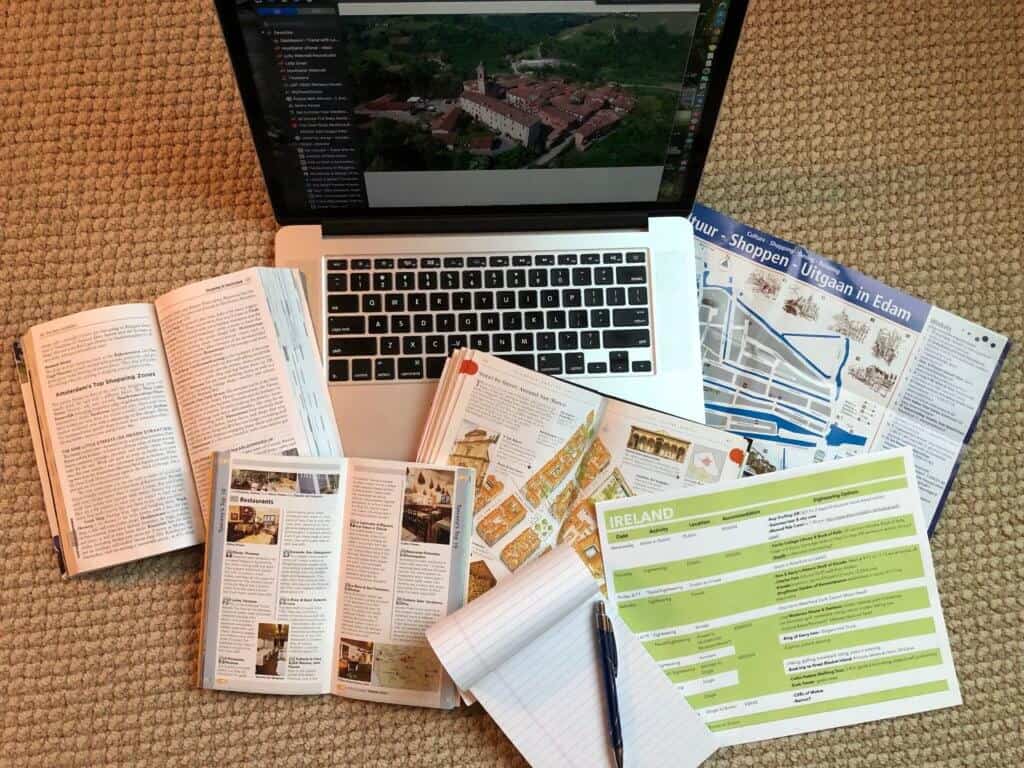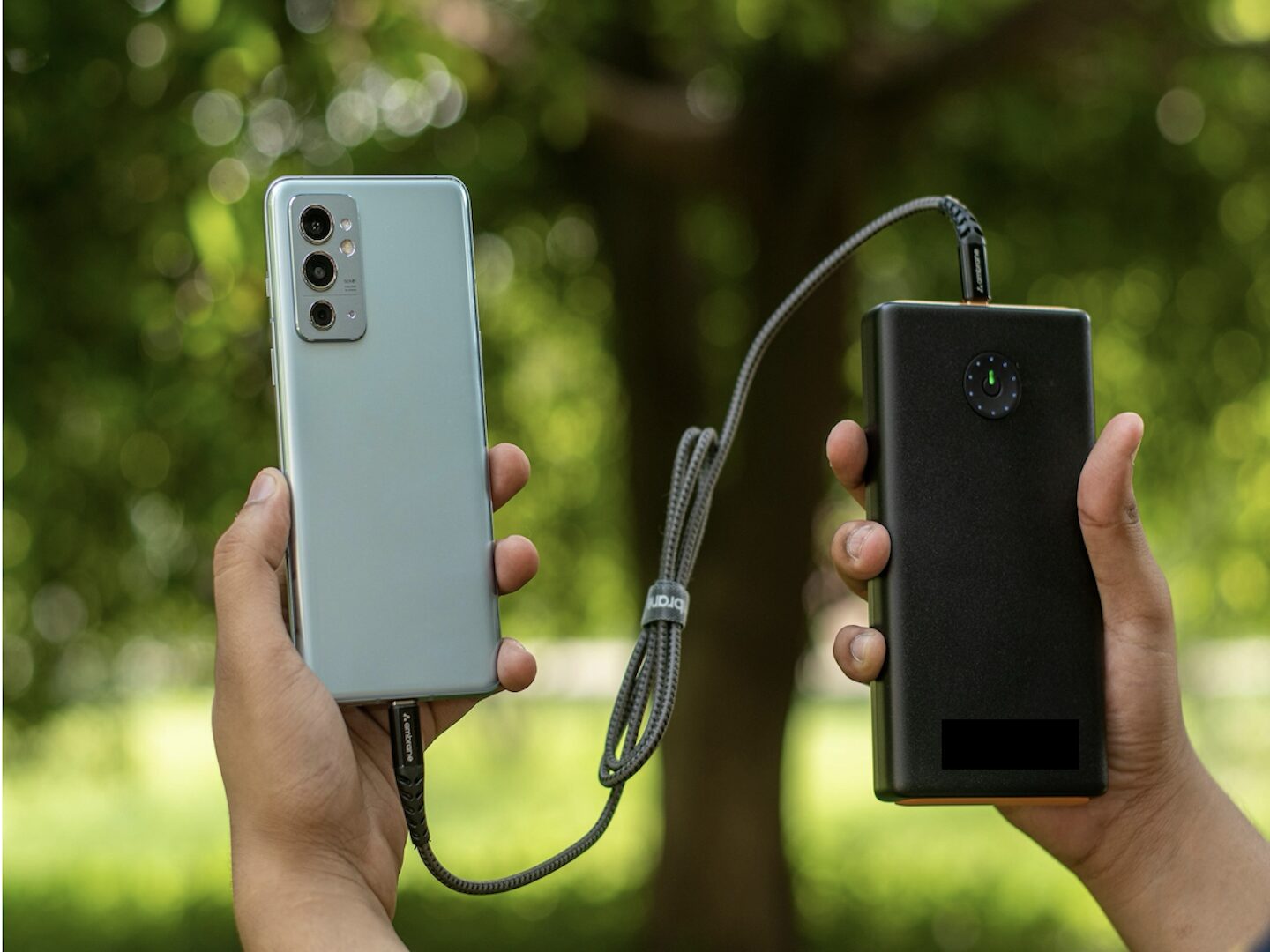When traveling from Paris to/from other regions in France, like Bordeaux in southwestern France, you’ve got a few choices: bus, rental car, regional train, or high-speed train. The French TGV high-speed train wins the race in time, saving hours of precious travel time without sacrificing comfort. This article highlights traveling from Paris to Bordeaux (and back again) via SNCF TGV INOUI high-speed trains (going about 200 mph/320 km/h). However, the information is relevant to other TGV rides in the country. My husband and I have used the French TGV train system several times on our visits to France over the years, and most recently, we traveled from Paris to Bordeaux – the highlighted trip in this article – costing about €135 each for round-trip tickets.
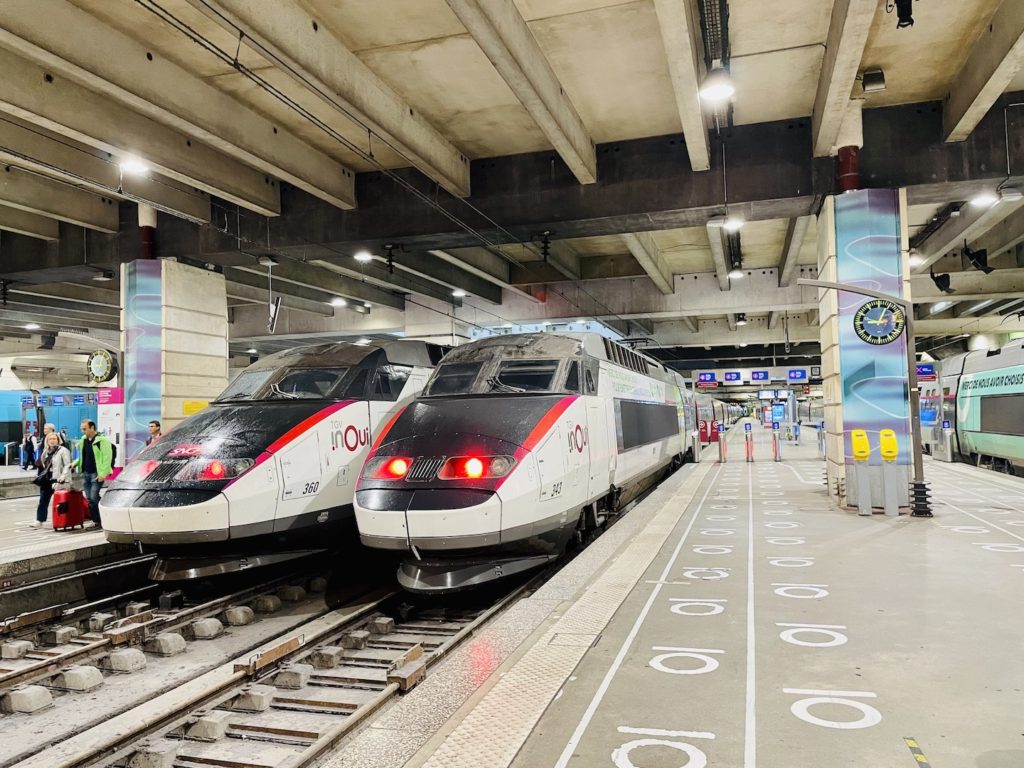
Map of French TGV Trains
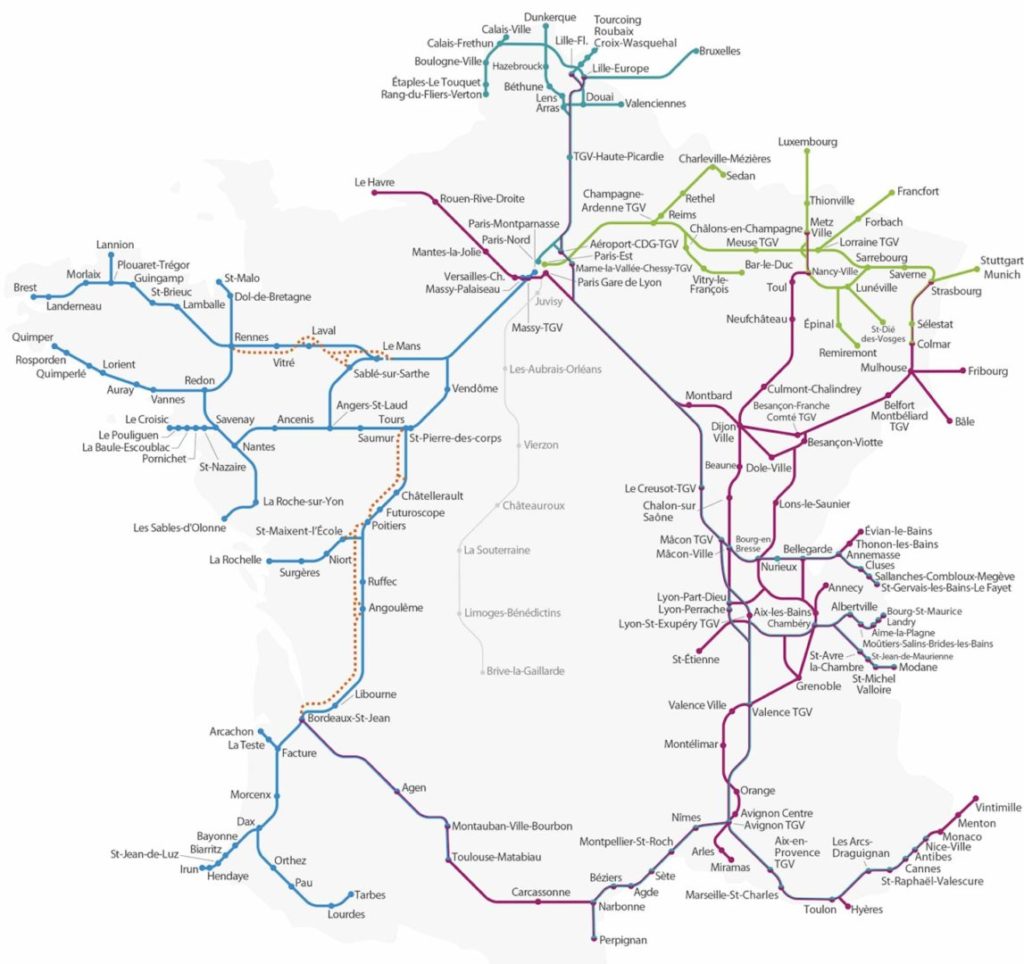
TGV Options
SNCF is the French National Railway and operates train routes in the country (and to other European spots), including the TGV. The TGV INOUI trains offer very comfortable seats, quiet cabins, as well as food and beverage service. Note that you can explore OUIGO, a lower-cost option. Since my husband and I wanted the comfort and convenience of a first-class coach, we opted for SNCF’s TGV INOUI ride.
Traveling to and from Bordeaux
This TGV INOUI high-speed train ride between Paris and Bordeaux takes just over 2 hours, and there are several options a day, usually with departures every 1-2 hours. When planning to travel to Bordeaux (after immediately arriving in Paris), you must navigate to the Montparnasse train station. You can take a regional train or a ride share/taxi ride from the airport to the train station if you want to make the trip in one day or overnight in a hotel near the Montparnasse train station (which is what we did after landing at Charles de Gaulle airport) for a morning departure the next day.
Train Stations for Travel To/From Bordeaux
There are several train stations in Paris offering service to various destinations. The high-speed TGV train travels between Gare Montparnasse (train station) in Paris and Gare Bordeaux St.Jean (train station) in Bordeaux.
TGV High-Speed Train Booking Tips
- Buy your tickets as soon as you know your itinerary to get your desired seats. Like booking most flights, you’ll want to select your departure time, ticket class (I chose first class), and seats. I chose the first level over the second level as there were no steps to navigate as I lugged my luggage onto the train.
- Ticket prices fluctuate, using dynamic pricing just as they do for air travel, and tend to get more expensive the closer your departure date is, so booking early can help you get a reasonable price.
- Expect the booking window to open about three months before your intended departure date.
- Research all your choices on the SNCF website. Some high-speed TGV trains make stops before the final destination. Look for the most direct route to save time. The designation “TGV INOUI” denotes newer (or refurbished) TGV trains with first-class comfort and conveniences, while “OUIGO” train coaches are more basic (and much cheaper). “TER” refers to regional trains.
- You’ll have a choice of booking a standard (second-class) or first-class ticket. (Second-class coaches may have shared access to electrical outlets and less access to lounges.) Look at your options and decide which is best for you.
- Unlike air travel, luggage has few size or weight restrictions on TGV INOUI trains – although you are responsible for lugging and lifting your luggage through the station, onto the train, and in the luggage storage area.
- Download the SNCF app on your smartphone to get updated information about your trip.
- Find a handy, paperless way to keep track of your tickets – take a picture of them on your smartphone and/or add them to your smartphone’s wallet.
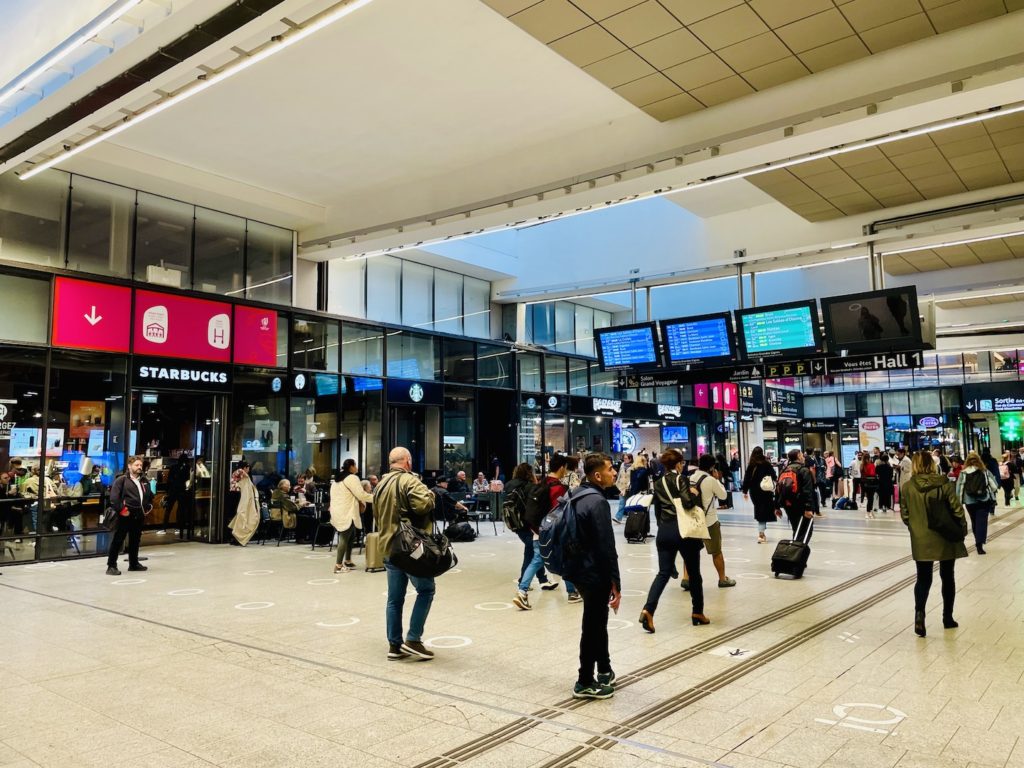
What to Expect Inside the Train Station
- The train stations have various dining options, including cafés and places with “to go” options.
- There are no benches, but some cafés like Starbucks have seats you can use if you purchase something.
- Find the hall number for your train using the SNCF app or departure board at the train station. Tickets didn’t have Hall numbers. (There are three halls in Gare Montparnasse.)
- The “voie” or track appears on the SNCF app and departure board within 20-30 minutes of departure. (You’ll probably see a few people standing in front of the departure board, waiting for the announcement.
- Scan your QR code from your ticket at the machine once you approach the train on the walkway next to the train.
- Walk to your coach. Look at the digital displays outside each coach to find the coach numbers.
- Once inside the coach car, you’ll see a sign indicating where to find your seat: either on the main level or upstairs on the second level.
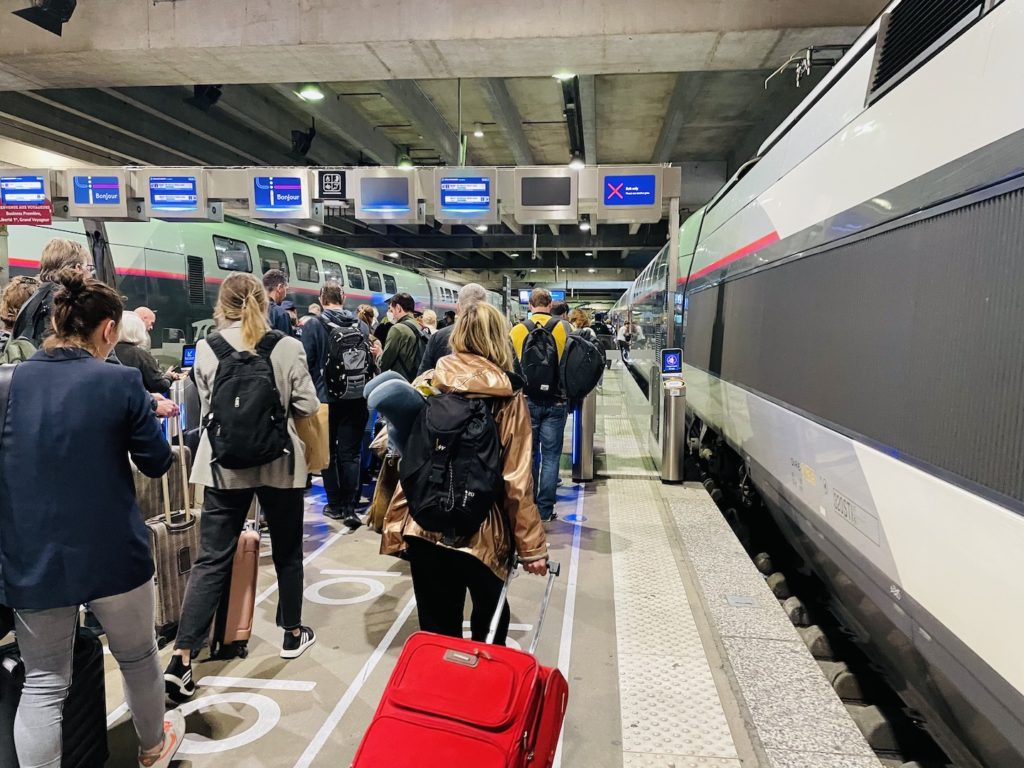
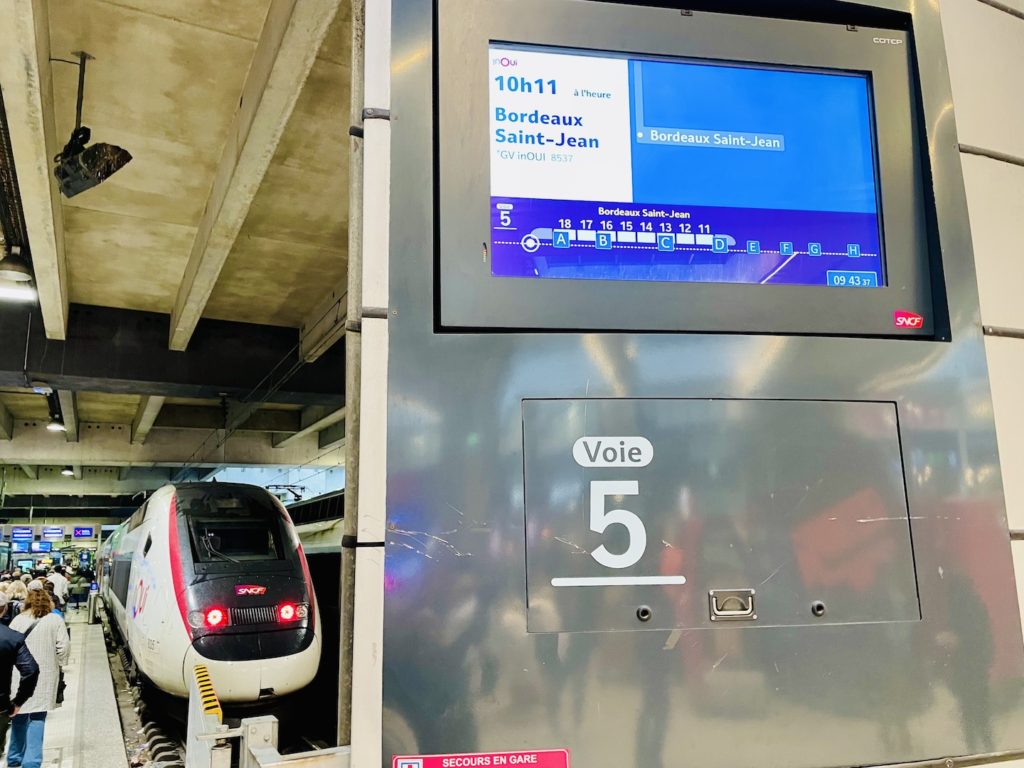
What to Expect in a TGV INOUI First-Class Coach
- It’s quiet in first-class coaches! The peaceful setting is perfect for reading, working on your laptop, listening to your favorite playlist, or snoozing.
- The coaches have one seat on the left side of the aisle and two seats on the other side of the aisle.
- Seats have armrests, European-style and USB charging ports, a reading light, and free WiFi.
- As you enter the coach, there’s storage in a luggage compartment for rollaboard suitcases and the like, as well as above the seats and under the seats for backpacks and smaller items.
- There’s a café on the second level with salads, sandwiches including Croque-Monsieur ham and cheese sandwiches, croissants, sweets like Pain au Chocolat, soda, beer, and wine.
- Restrooms are located on each level of the coach/car.
- Smoking is not permitted.
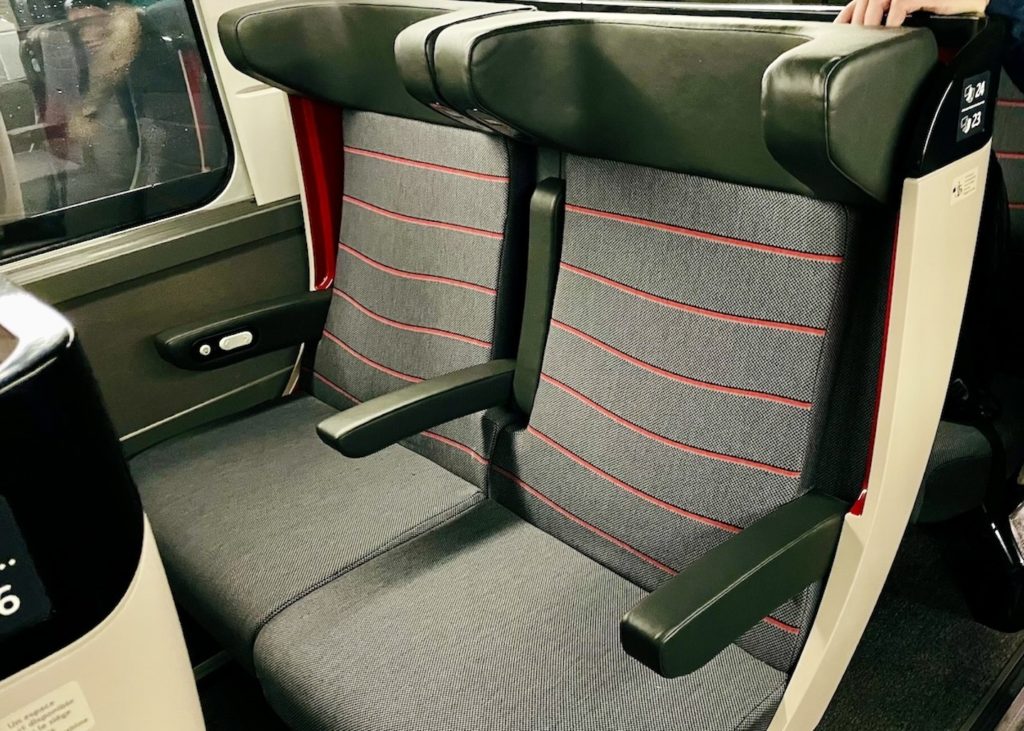
Tips for Your Train Ride
- Begin to board as soon as you learn of your track so you have a better chance of finding room for your luggage.
- Have your adapter or portable charging hub handy once you are seated. Remember that plugging your charger directly into a USB port can expose your device to nefarious efforts to hijack your data. Bring a charging brick/block along.
- A conductor will come through during your ride to scan the QR code on your ticket during your ride.
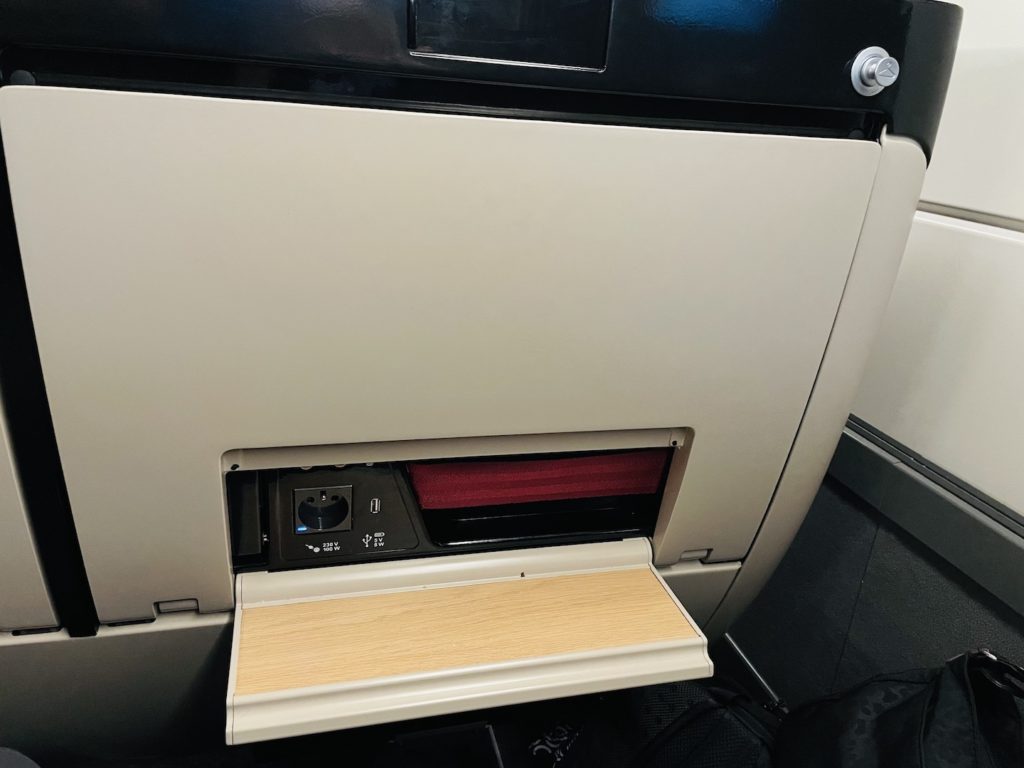
Train Strike Information
Strikes and protests are not unusual in France. The positive to these work stoppages, including for the railroads, is that they are planned and announced in advance. Fortunately, a website, Ces’t la Grèves (It’s the Strike in English), posts information on upcoming strikes. The site is in French, so I used Google Translate to help me navigate the information. Should a strike occur after you’ve purchased tickets, SNCF will notify you of the event and provide options for rebooking for another day.
Handy Train Related Vocabulary Translations
Acronyms can get confusing, so here are quick translations to help you plan your French train trip.
- SNCF = France national train network
- TGV INOUI = France’s high-speed train (fewer passengers per coach, newer coaches, no luggage allowances, onboard food and beverage services)
- OIGIO = France’s budget train option (more passengers per car, limited luggage allowances, no food or beverage services)
- TER = France’s regional train line
- RER = commuter rail system in Paris
- gare = train station
- billet = ticket
- voie = track
- coach = train car
- place = seat number
Related Articles
France
- Best Day Trips from Sarlat in Southwest France
- Bordeaux: The Beautiful Capital of a Historic French Wine-Producing Region
- Exploring France: Normandy, Brittany, Provence, and Paris
- Saint-Émilion: An Enchanting Medieval Village in Southwest France
- Sarlat, France: A Marvelous Medieval Town to Explore
- Southwest France: Spend a Day Exploring Fascinating Châteaux and Gardens
- View Prehistoric Cave Art in Southwest France
Trip Planning
- Best Apps and Websites for Savvy Travelers
- Expert Tips for Traveling to Europe for More Fun, Less Stress
- Google Translate Guide for Travelers
- Top 10 Tips for Driving in Europe
- Top 10 Tips for Renting a Car in Europe
- Travel Planning Timeline
Final Thoughts
Traveling aboard a TGV train was the perfect way to travel from Paris to Bordeaux as well as many other French destinations. Once we arrived at Gare Bordeaux St. Jean, we went to the rental car counter at the train station to get the rental car we reserved. From there, we explored two charming towns, Sarlat (plus amazing nearby châteaux and gardens) and Saint-Émilion, besides Bordeaux. My husband and I found the TGV train the perfect way to get quickly to Bordeaux, which we used as a hub for the next week of our trip in southwestern France. Get inspired to travel to other parts of France by reading my article on Exploring France.
Comments
Feel free to share your experiences aboard a French TGV or regional train. Your ideas could be helpful to other travelers. Thanks! 🙂

